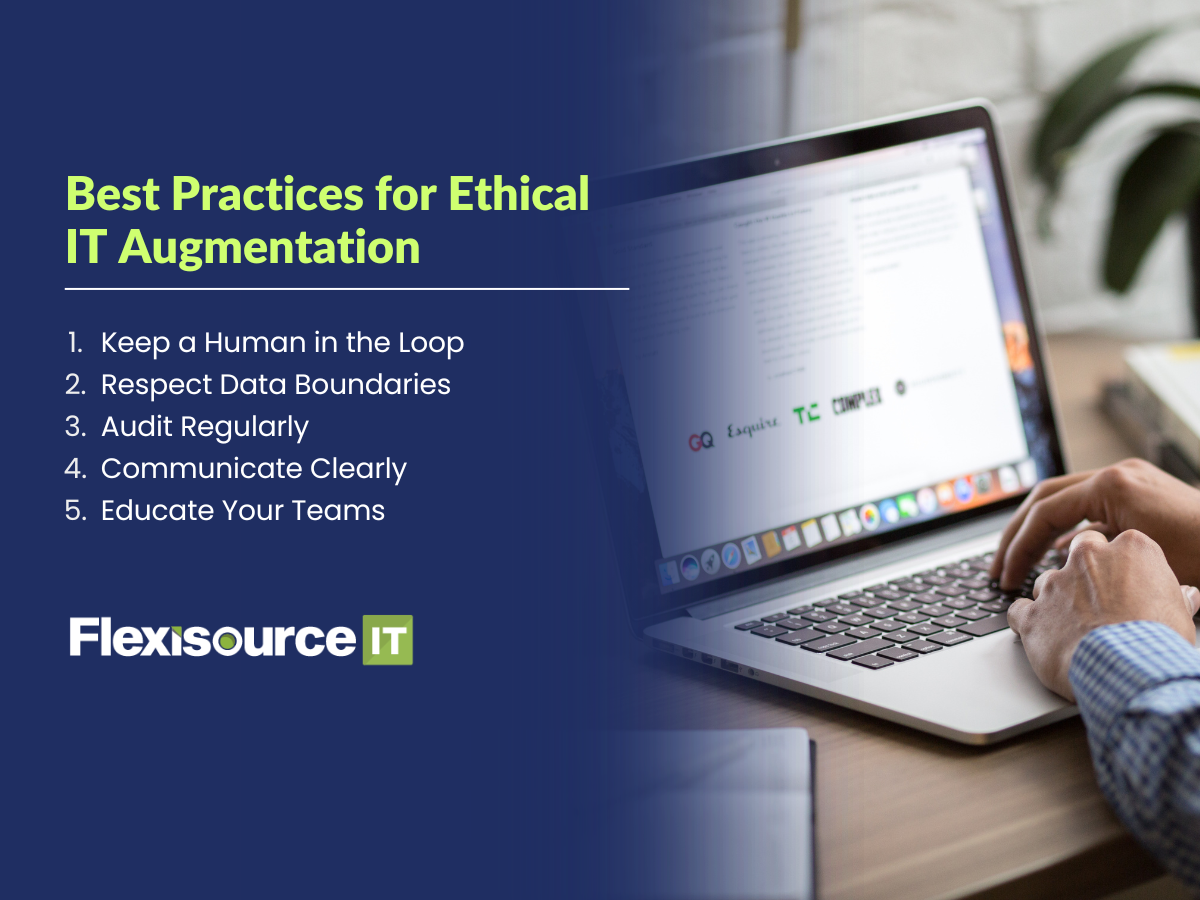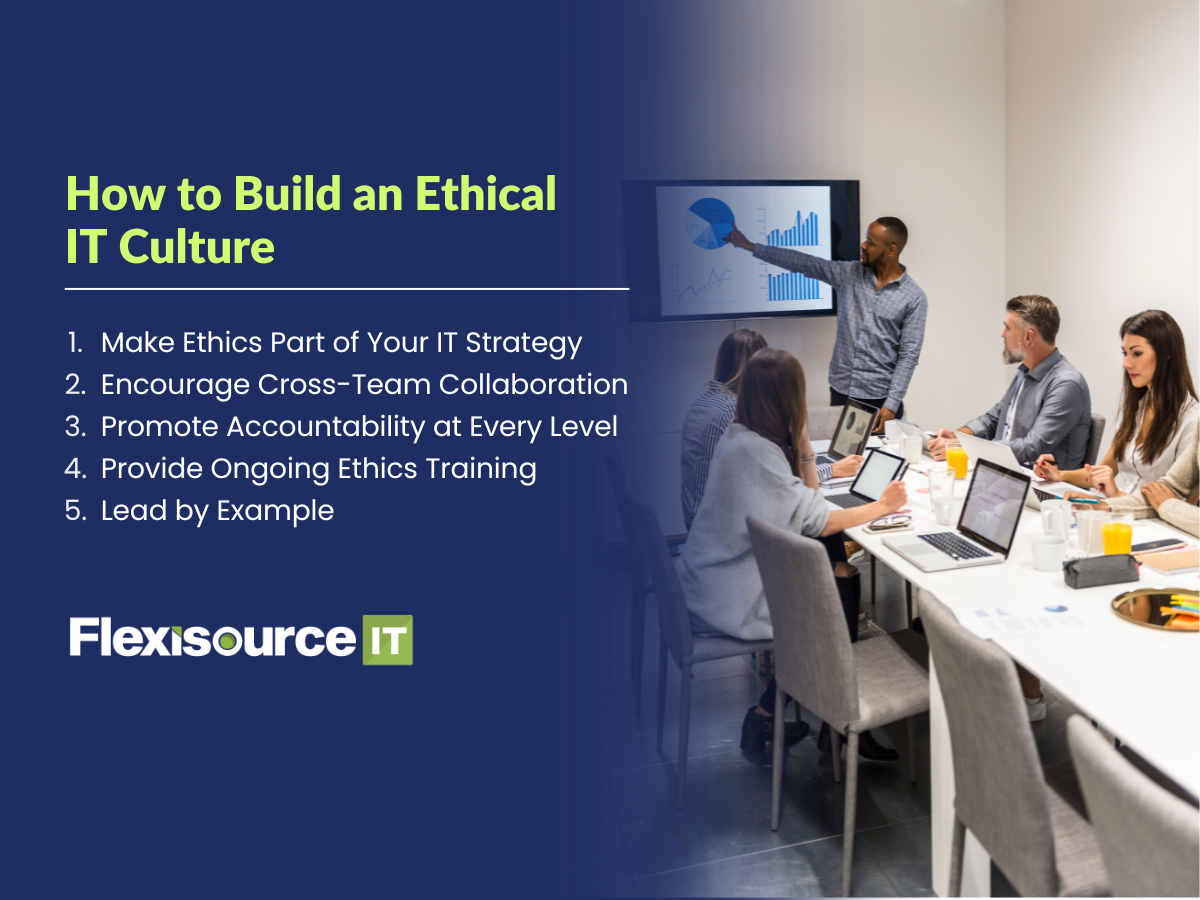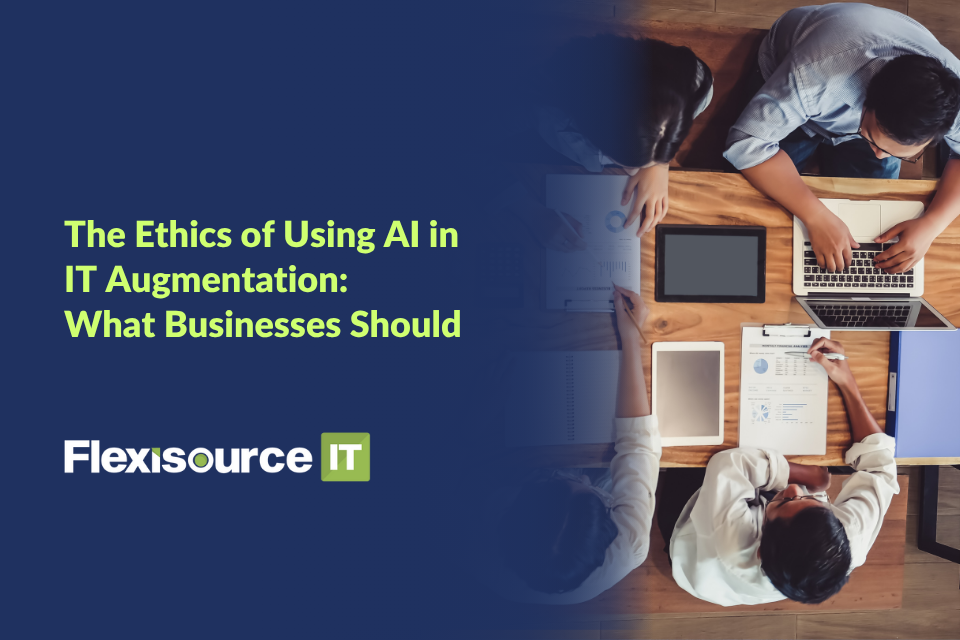More and more companies are leaning on IT augmentation to support their growing tech needs. By blending the skills of their in-house teams with the power of AI, businesses are able to respond quicker, work smarter, and keep operations running smoothly.
But as AI tools become deeply embedded in these workflows, it’s no longer just about speed and efficiency, it’s also about responsibility. When systems start making decisions on our behalf, how do we make sure those decisions are fair, secure, and transparent?
That’s where ethics come in. This blog explores what IT augmentation really means, why it’s such a game-changer for IT teams, and what businesses need to consider to use it responsibly.
What Is IT Augmentation?
IT augmentation means using tools like AI, automation, and the right tech stack to help in-house IT teams. It doesn’t replace people—it supports them by making work faster, fixing problems sooner, and letting them focus on what matters most. It’s like giving your team extra smart, always-ready help.
With IT augmentation, companies don’t have to hire large teams to meet growing tech demands. AI can handle routine tasks like monitoring systems or responding to common issues, while your staff tackles bigger challenges. It’s a smarter, more flexible way to boost productivity without burning out your team.
Why Businesses Are Investing in IT Augmentation
It’s clear why more businesses are embracing IT augmentation. Beyond just automation, it delivers smarter, faster, and more sustainable ways to manage growing IT demands.
- Improved efficiency: AI helps IT teams resolve issues quickly—sometimes before users even notice there’s a problem. This reduces downtime and keeps operations running smoothly. It also frees up time for staff to focus on meaningful tasks.
- Proactive support: With AI monitoring systems 24/7, potential issues are flagged and addressed instantly. This prevents small glitches from turning into major disruptions. It also boosts customer satisfaction through faster responses.
- Competitive edge: Businesses using IT augmentation can adapt faster to changes and customer needs. They can test, learn, and grow more quickly than those using manual processes. This shows AI at work, helping teams stay ahead in a fast-changing tech world.
- Better resource allocation: By automating repetitive tasks, your team can spend more time on strategic initiatives. This improves job satisfaction and makes better use of your in-house talent. It also reduces reliance on overtime or extra headcount.
- Cost Control & Sustainability: AI helps cut costs by making workflows easier and reducing mistakes. Over time, this saves money and makes your systems stronger. It also supports long-term growth by advancing sustainable AI that helps both your business and the environment.
With IT augmentation, teams can scale without burning out—giving businesses the support they need to thrive, not just survive.
Ethical Concerns in AI-Driven IT Augmentation
As useful as AI can be, it’s not without risks. When left unchecked, AI tools can cause more harm than good, especially in critical IT systems. These are some of the main ethical concerns to watch out for.

1. Bias in AI Models
AI learns from historical data, and if that data is flawed or biased, the outcomes will be too. This can result in decisions that are unfair or inconsistent. Even in technical settings, hidden bias can quietly affect performance and trust.
2. Privacy & Data Usage
AI often uses large amounts of sensitive data like user logs or personal details. It’s important to only collect what’s needed and make sure users know what’s being used. AI-powered cybersecurity helps keep this data safe, but businesses still need to handle it with care to keep user trust.
3. Transparency
If a system takes action—such as blocking access or changing a workflow—your team needs to be able to explain it. Black-box decisions damage credibility and make troubleshooting difficult. Transparency is key to maintaining user confidence and regulatory compliance.
4. Accountability
When something goes wrong, it must be clear who is responsible. Blaming the system or a third-party vendor is not enough. Your organisation needs defined roles and processes to take ownership of AI outcomes.
5. Over-Reliance on Automation
Automating routine tasks can be efficient, but over-relying on AI may reduce human oversight. Important issues can be overlooked if teams assume the system is always right. A balanced approach ensures AI supports your goals without replacing critical thinking.
Best Practices for Ethical IT Augmentation
AI is changing the way we work, but with great power comes great responsibility. To make the most of IT augmentation, businesses need to be thoughtful, transparent, and human-focused.

1. Keep a Human in the Loop
AI can be powerful, but it still needs human judgement to keep things balanced. Every decision that could impact a user should be reviewed by a person before it goes live. This helps prevent mistakes and keeps your business accountable.
2. Respect Data Boundaries
Only collect the data you truly need and always follow privacy laws in your region. Being careful with customer information builds trust and protects your brand’s reputation. People appreciate businesses that treat their data with care and transparency.
3. Audit Regularly
Even the smartest AI can drift off course if left unchecked for too long. Make a habit of reviewing systems to ensure they are still fair, relevant, and working as expected. Regular audits help you catch problems early and improve system performance over time.
4. Communicate Clearly
Let your users and team members know when AI is involved in a process. Be upfront about what the system is doing and how it helps. Clear communication removes confusion and shows that your business values honesty and user awareness.
5. Educate Your Teams
Help your staff understand how AI tools work and what role they play in daily tasks. When people know what to expect, they feel more confident and can speak up if something seems off. Training creates a culture where both humans and machines can thrive together.
How to Build an Ethical IT Culture
Embedding ethics in IT augmentation starts with leadership. It’s not just about ticking boxes. It’s about creating a culture where ethical decisions are the norm.

1. Make Ethics Part of Your IT Strategy
Don’t wait for problems to arise before addressing ethics. Build ethical considerations into every stage of planning, from design to deployment. A proactive approach shows your team and stakeholders that doing the right thing is non-negotiable.
2. Encourage Cross-Team Collaboration
Ethics in tech shouldn’t sit with just one department. Involve IT, legal, compliance, and leadership in regular discussions and decision-making. When different perspectives come together, you’re more likely to spot risks early and solve them responsibly.
3. Promote Accountability at Every Level
Ethical IT starts with individual responsibility. Make sure everyone understands their role in using AI and automation wisely. Clear expectations empower people to act with integrity and speak up when something feels off.
4. Provide Ongoing Ethics Training
One-off training isn’t enough to build an ethical culture. Offer regular sessions that evolve with technology and encourage open discussion. People are more likely to apply ethical thinking when they feel confident and well-informed.
5. Lead by Example
Leadership sets the tone for the entire organisation. When senior staff model transparency and fairness in their own tech decisions, the rest of the team follows. Ethics becomes real when it’s practised, not just preached.
Final Thoughts
IT augmentation is helping businesses work smarter, fix problems faster, and stay ahead in a busy world. As AI takes on more decision-making, it’s important to remember that being responsible matters just as much as being quick. Using ethical practices isn’t just an option but a must to keep systems fair and reliable.
When people stay involved, data is handled carefully, and companies are open about how AI is used, the benefits multiply without risks. A workplace that values honesty and learning helps teams feel confident and make better choices every day. At the end of the day, it’s not just what AI can do but how thoughtfully we use it that really counts.
Need guidance or a trusted partner in ethical IT augmentation? Contact Flexisource IT today and let’s build smarter, fairer tech together.











